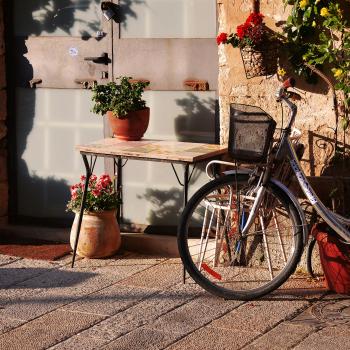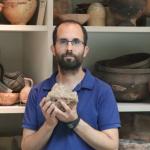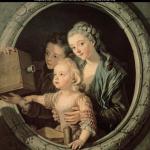 For the past five years, I’ve been experimenting with the use of contemplative practices in the classes I teach at UNC Asheville. For a quick overview of the range of contemplative practices being used in higher education today, see The Center for Contemplative Mind in Society’s Tree of Contemplative Practices.
For the past five years, I’ve been experimenting with the use of contemplative practices in the classes I teach at UNC Asheville. For a quick overview of the range of contemplative practices being used in higher education today, see The Center for Contemplative Mind in Society’s Tree of Contemplative Practices.
On the eve of a new academic year, today I offer you a list of some of the things I’ve observed as I explore the use of this powerful pedagogy in my own work as a contemplative educator.
- The experience of learning is as important as the content to be learned.
- The experience of learning is the content.
- Paying attention to the experience of learning results in a clearer understanding of the content.
- Paying attention to the experience of learning results in a deeper connection to the content.
- In an age of information overload, the less information in the classroom the better.
- Improvisation, spontaneity, surprise: a class that creates conditions for these is an alive classroom.
- The cultivation of an inquiring mind: a contemplative classroom is one in which a student is given many opportunities to awaken, cultivate, and engage the inquiring mind.
- Students benefit from being offered a variety of approaches and multiple opportunities to experience their own inquiring minds.
- A lecture that foregrounds the lecturer’s own inquiring mind in action is one way to demonstrate for students how reasoned, imaginative, and intuitive inquiry works.
- When a student’s inquiring mind is activated, he or she might experience a kind of liberation.
- In a unidirectional class—professor > content > student > content > professor—it’s every student for herself. In an omnidirectional classroom—a contemplative classroom—everyone is in it together. Teaching and learning come from any and every direction.
- A contemplative classroom cultivates a community of learners.
- Confusion, frustration, yearning, certainty, doubt, illumination, revelation, love and delight, determination, discipline, discovery, defeat: this is the curriculum. A contemplative classroom creates an environment in which students can admit to experiencing any one of these feelings in the process of learning. When one student admits to experiencing frustration or self-doubt, other students in the room who have experienced the same feel validated. They may also feel less isolated, more connected to other members of the class.
- Contemplative classrooms are based on cooperation at least as much as if not more than competition. When a student in a contemplative classroom shares her experience of discovery or of finally understanding something, other students may be encouraged to trust the process that will eventually lead them to understanding and insight.
- Explaining difficult material in a variety of ways until a student gets it is not enough. That merely perpetuates the sense that the student is helpless until the professor rescues him. To make it possible for a student to understand difficult or complex material, a contemplative classroom uses relevant, creative exercises designed to give a student an experience of concepts, theories, structures, forms. A contemplative classroom links experience to thought, thought to experience.
- Insights and intellectual and artistic breakthroughs do not always arise while one is directly engaged with a problem or project. Understanding may not happen in the classroom or during designated periods of study or other academic work outside the classroom. A contemplative classroom creates opportunities for students to concentrate on an intellectual or artistic task and then to release the task and open to whatever may arise when one is in a receptive rather than active mode.
- Inner chatter: it almost never stops. A contemplative classroom teaches students to hear it and, on occasion, to turn down its volume so that they can listen more fully, deeply, patiently, respectfully to the voice of an other.
- Contemplative learning can help one see in one’s own experience forces operating within and outside one’s self. Forces unifying and divisive, constructive and destructive, just and unjust. Contemplative learning offers students tools to help them see clearly and to choose wisely whether to resist, participate in, or work to change systems in which their lives are embedded.
- A contemplative educator draws on experiences gained from her own contemplative practice or practices to inform and guide her work as a teacher.
- Discipline: it’s not just an academic field of study. A contemplative educator has a disciplined contemplative practice, or more than one practice of her own.
- My experiences of contemplative practices have changed the way I prepare for classes. Insights I have experienced through my personal practices—formal mindfulness meditation, prayer, text study, writing—have changed the way I read texts as I prepare to teach them. I invite what I read—or listen to or view—to suggest exercises or practices that will create the possibility that students will arrive at their own insights and connect their personal experiences to the course material.
- Is 22 blank or spacious? Open or empty? Contemplative learning directs our attention to what we might otherwise dismiss as a mistake, or unimportant, insignificant. Contemplative learning is expansive. Everything, everyone is included.
- The most important item on the syllabus for a contemplative class is the attendance policy: You must be present to learn.
This list isn’t complete. One day, perhaps, I’ll finish it. But now I have a syllabus to write, and, as the new chair of the English Department, policies to learn before I call it a day and mindfully drive home for the night.

Richard Chess is the author of three books of poetry, Tekiah, Chair in the Desert, and Third Temple. Poems of his have appeared in Telling and Remembering: A Century of American Jewish Poetry, Bearing the Mystery: Twenty Years of IMAGE, and Best Spiritual Writing 2005. He is the Roy Carroll Professor of Honors Arts and Sciences at the University of North Carolina at Asheville. He is also the director of UNC Asheville’s Center for Jewish Studies.
Image above by Quinn Dombrowski, used with permission under a Creative Commons license.
















